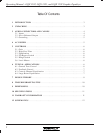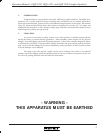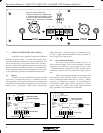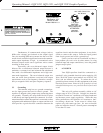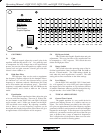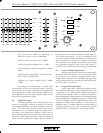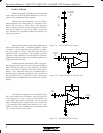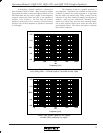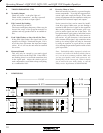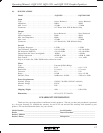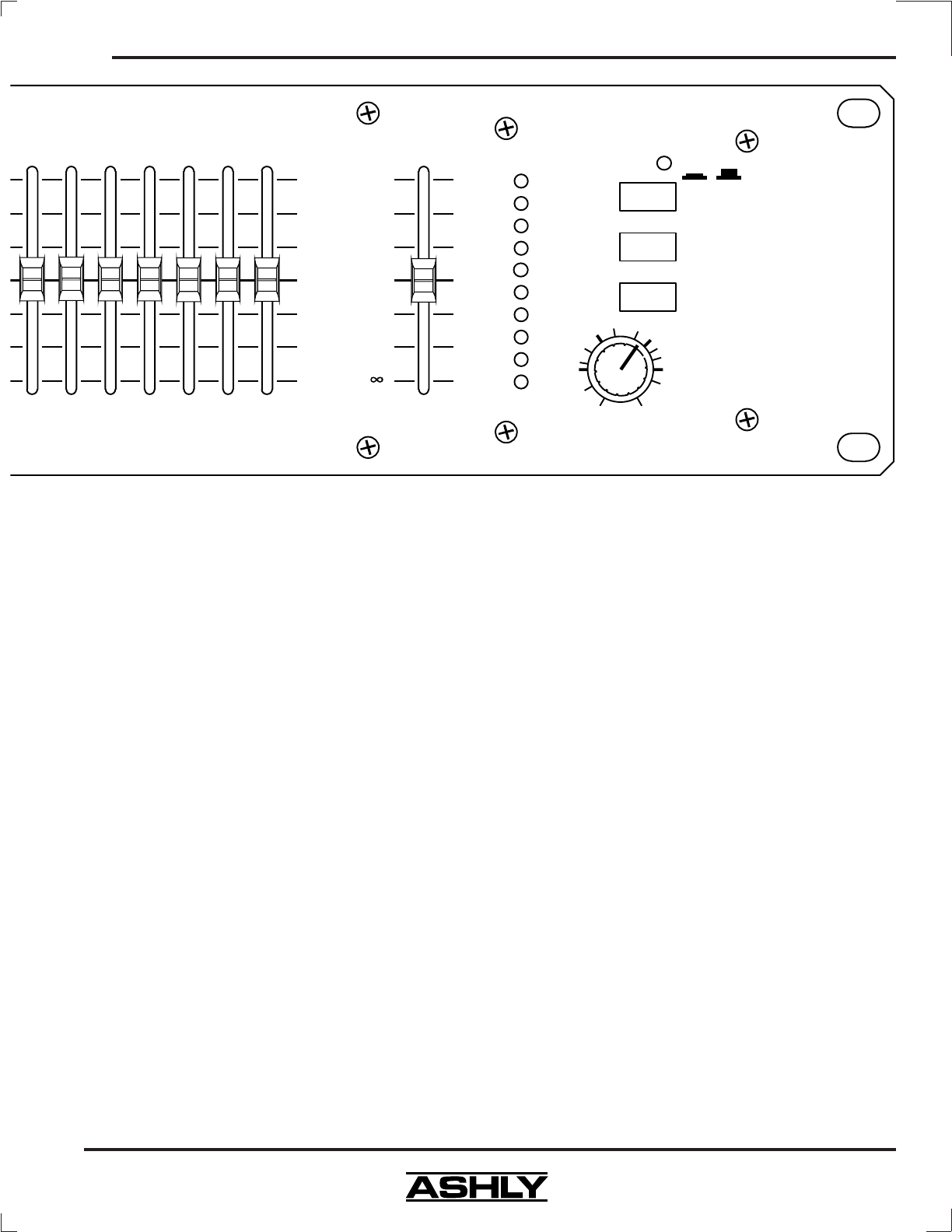
7
Operating Manual - GQX 3102, GQX 3101, and GQX 1502 Graphic Equalizer
Range
Output
Level
5K 8K 10K 12.5K 16K 20K6.3K
Gain
+15(+6)
+10
+5
0
-5
-10
-15(-6)
(dB)
Clip
EQ
HPF
+6
+3
0
-3
-6
-9
-12
-15
-18
-21
VU
6 - 15
In - Out
In - Out
285
200
100
50
25
12
(Hz)
+6
+4
+2
0
-3
-9
-
Very low bass (the “wind” in a kick drum, al-
most felt as much as heard -40Hz-80Hz.
The low register of a male voice - 200Hz
The low register of a female voice - 350Hz
Lower midrange (“warmth” frequencies) - 400Hz-
1KHz
Upper midrange (“harshness”, snare drum “bite”,
“hot” sound) -2.5KHz-4KHz.
Sibilance (“sss” sounds, cymbal “sizzle”) - 8KHz-
15KHz.
Try using these starting points as a guide when
you want more or less of these types of sounds. Adjust by
ear from there. It is always a good idea to remember that
a little equalization usually works out much better than a
lot, and that there are many audio problems which can not
be solved with equalization alone.
6.2 Feedback Control
A graphic equalizer can be used to provide some
control over moderate feedback problems, but does not
have enough flexibility or resolution to handle severe situ-
ations. You will achieve the best results when you can
eliminate one or two feedback points by setting one or
two sliders for no more than a 6dB cut. Often you can
find a feedback point by boosting sliders in succession to
determine which frequency ranges contain the feedback
modes, and then cutting those ranges. Be very careful in
this process to avoid explosive feedback and possible sys-
tem and hearing damage! If you find feedback points
with many equalizer bands, remember that cutting every
band may not help (all you will do is reduce system gain).
The combination of a graphic equalizer for tone control
and a parametric equalizer (such as the Ashly PQX-571
or PQX-572) for feedback control is highly recommended.
6.3 Console Channel Equalization
Many mixing consoles provide only simple equal-
ization for individual channels. If your console has chan-
nel inserts, you can patch your graphic equalizer into a
channel that’s being used for something important (like
your lead singer) and use it to tailor the sound of this chan-
nel exactly the way you want.
6.4 Large Room Equalization
Large rooms tend to suffer from multiple reflec-
tions with long time delays, long reverberation times, and
“ring-modes”, all of which lead to reduced intelligibility
and a generally “muddy” sound. As sound travels long dis-
tances through the air, high frequencies are attenuated more
than low frequencies. In general, large rooms benefit from
some low frequency roll-off, high frequency boost, and
attenuation of ring mode frequencies. As in the case of
feedback control, a graphic equalizer can help reduce an
isolated ring-mode or two, but a tunable narrow-band
equalizer such as a parametric is more effective here.




